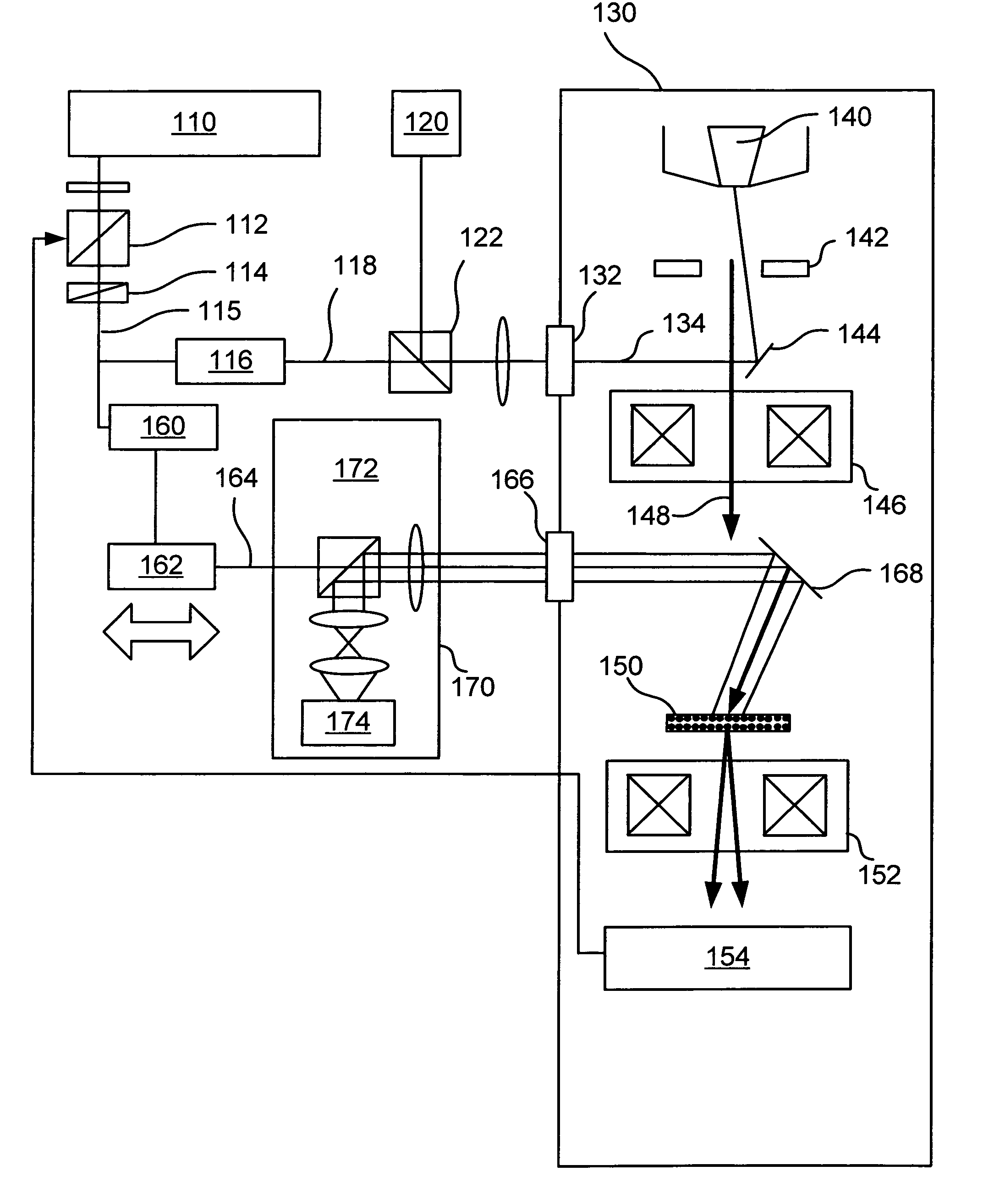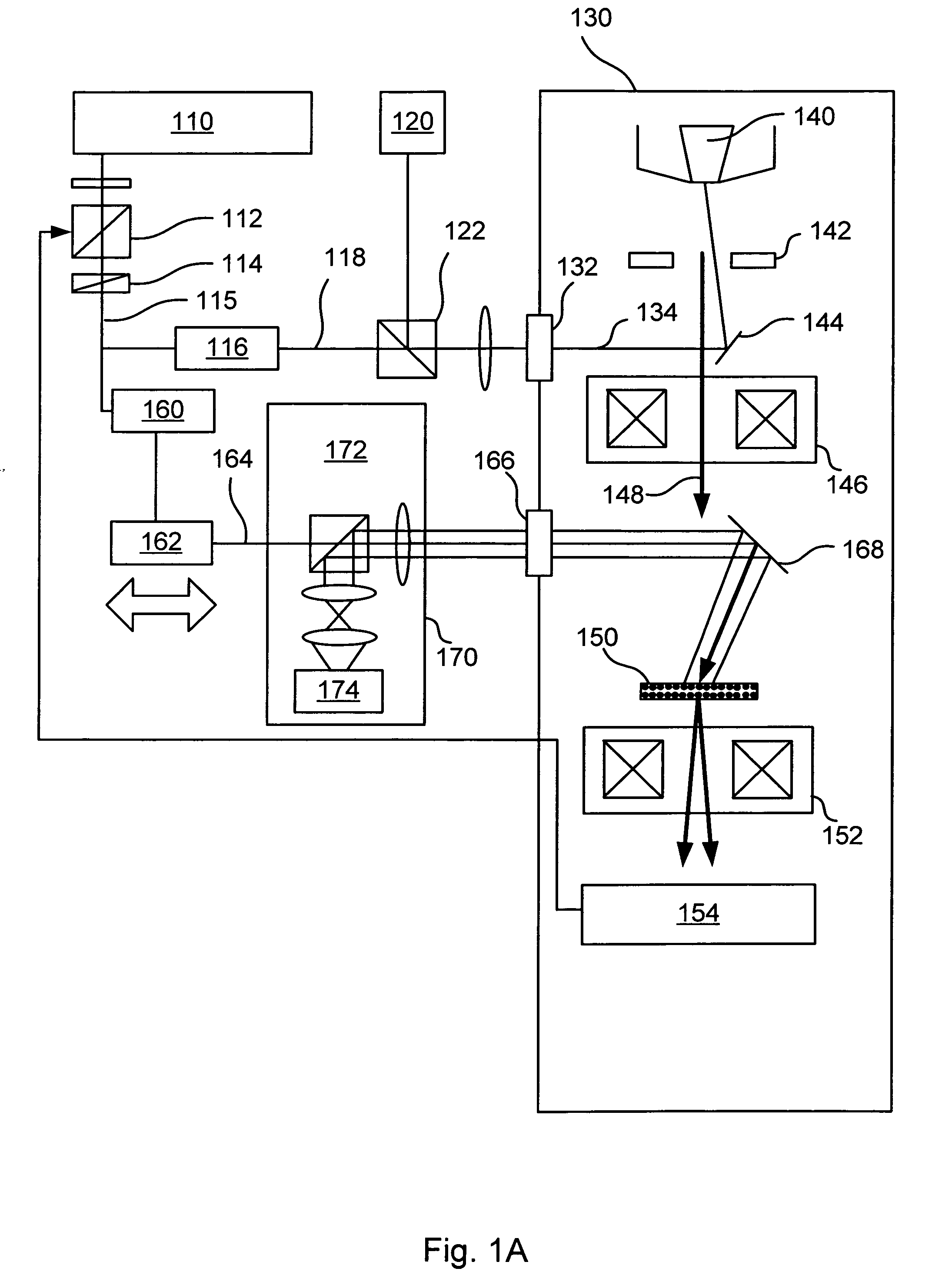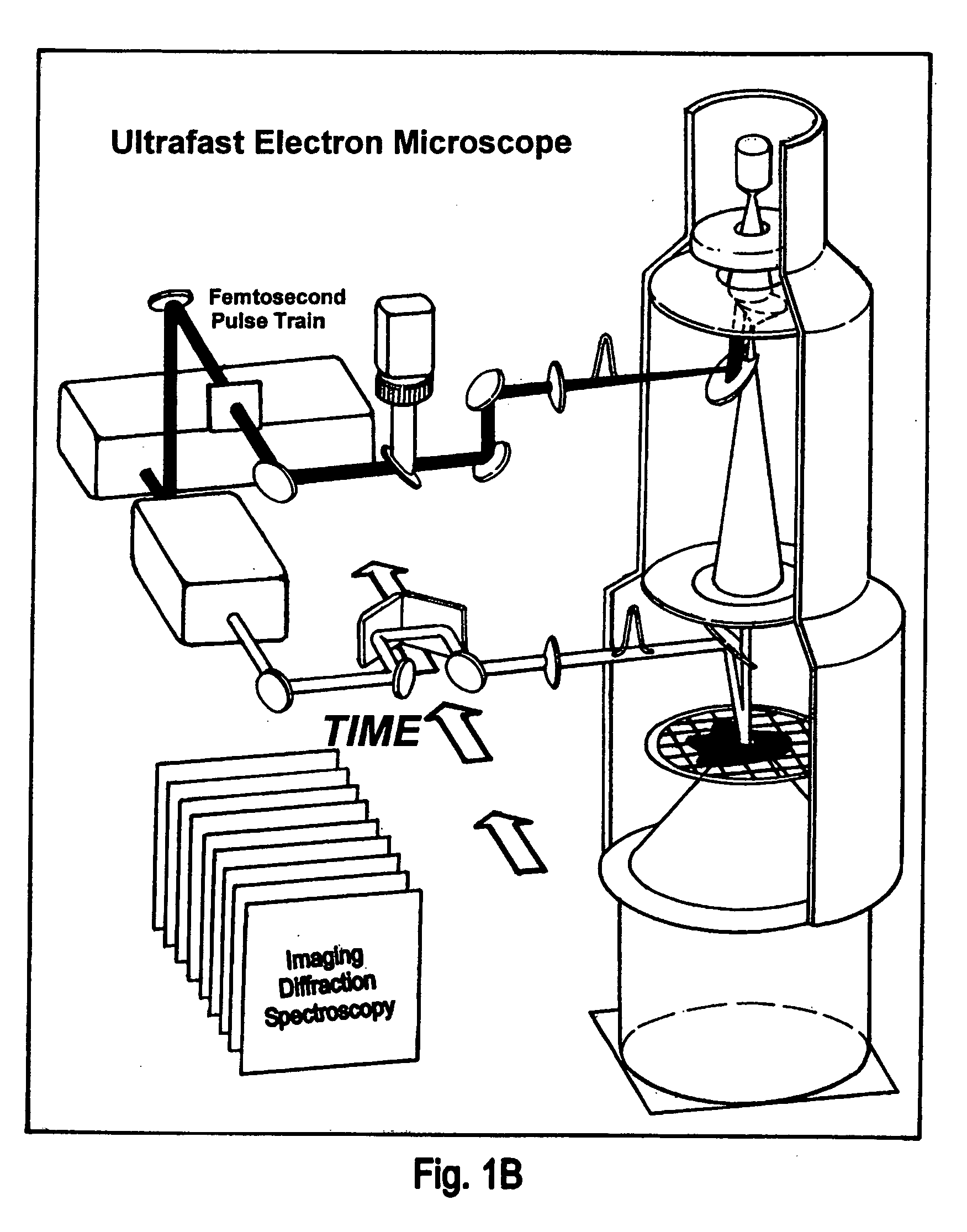Method and system for ultrafast photoelectron microscope
a photoelectron microscope and ultra-fast technology, applied in the field of objects imaging, can solve the problems of not being able to obtain static images, giving us unparalleled insights into their static behavior, and unable to achieve static images currently available, and achieves the effect of low energy and easy implementation
- Summary
- Abstract
- Description
- Claims
- Application Information
AI Technical Summary
Benefits of technology
Problems solved by technology
Method used
Image
Examples
Embodiment Construction
[0042] According to the present invention, techniques related to the imaging of objects are provided. In particular, the present invention provides methods and systems for imaging one or more objects using one or more pulses of particles containing from about one electron to about 10,000 electrons or more preferably about 10 electrons to about 100 electrons in a transmission electron microscope system. More particularly, the present invention provides methods and systems for identifying information about one or more temporal components associated with one or more spatial features of certain objects being imaged. Merely by way of example, the invention has been applied to imaging certain chemical, physical, and biological objects. The invention, however, can also be applied to other applications such as other areas of biology, chemistry (e.g., organic, physical, biochemistry), medicine (e.g., medical devices, diagnostics, analysis, treatments), physical sciences, electronics, semicon...
PUM
 Login to View More
Login to View More Abstract
Description
Claims
Application Information
 Login to View More
Login to View More - R&D
- Intellectual Property
- Life Sciences
- Materials
- Tech Scout
- Unparalleled Data Quality
- Higher Quality Content
- 60% Fewer Hallucinations
Browse by: Latest US Patents, China's latest patents, Technical Efficacy Thesaurus, Application Domain, Technology Topic, Popular Technical Reports.
© 2025 PatSnap. All rights reserved.Legal|Privacy policy|Modern Slavery Act Transparency Statement|Sitemap|About US| Contact US: help@patsnap.com



